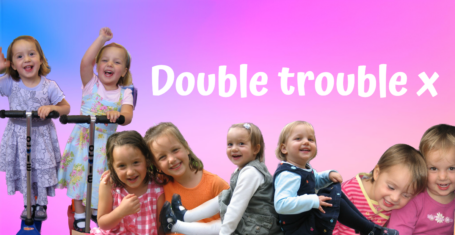
Review: Sleeping Beauty / The Four Seasons
RACHEL CUNLIFFE and MILO YIANNOPOLOUS like the umbrella scene but disagree about everything else.
25th – 26th February, 7.30, Mumford Theatre. £4-6.
RACHEL CUNLIFFE would recommend the Cambridge University Ballet Club’s show, only if you like ballet.
![]()
I am a dancer at heart, if not actually at Cambridge (thank you fractured ribs). While I understand that two hours of classical ballet on a Thursday night (what is it about Thursdays? Everyone always seems so dead) isn’t everyone’s cup of tea, I was pretty excited. I realise that for most the word ‘ballet’ conjures up memories of being forced into pink tutus at age six by over-enthusiastic mothers who refused to listen when we said we’d all rather learn karate and little enthusiasm, but bear with me here.
The first thing to mention about the Cambridge University Ballet Club’s double bill, entitled The Seasons: Variations, and Tchaikovsky’s ‘Sleeping Beauty’, is that it’s at the Mumford Theatre in ARU though I have never seen so much Cambridge stash in one room. Seriously guys, what are we trying to prove here? Though the big stage meant less clumsy crowding and tripping over point-shoes), the performance started half an hour late, which made the first number a bit of an anti-climax; pretty costumes, but lots of nervous shuffling.
I’ll fight the urge to get technical, and just say that it improved a lot from there. The first half was a montage of different dances loosely representing the seasons, with dancers ranging from total beginners to girls who must have been dancing since they were old enough to stand straight. Obviously, the more technically impressive dancing came from the advanced class, with a special mention to soloist Emma Rhule who really picked up the pace after the average-at-best opening number. But that’s not to say the less-experienced dancers weren’t thoroughly entertaining. Despite out-of-time steps and shaky posture they were enjoying every second of it and that really came across, especially during some innovative choreography with pink umbrellas (my personal favourite).
The highlight, however, was an abridged version of the classic Sleeping Beauty, which was beautifully choreographed, and far more ambitious than I’d expected from a student production. To keep things short and sweet, the star of the show was not the perfectly pink Princess Aurora or the simpering sweet Lilac Fairy (though both were terrific dancers), but the Wicked Fairy Carabosse. I was rooting for the villain as soon as she crashed the christening in a whirlwind of jealous energy (she ought to have been invited, it’s only polite), and her dramatic miming in character shoes made a welcome contrast to the classic waltzes and adagios, lovely though they were.
Would I recommend this to non-dancers? If you’re interested ballet, then sure. It’s a slick, lively performance with some very talented dancers. But to those of you who think ‘pas de bourrée’ sounds like a type of cheese, probably best to sit this one out, and spend Friday night at Clare Cellars with everyone else.
MILO YIANNOPOULOS was not impressed.
It must be dreadful to be a ballet mum. Imagine it: watching from behind a rictus grin as your portly offspring flounders about on stage like an autistic hippo, sighing, “You looked so beautiful, darling,” through painfully gritted teeth while praying that little Lizzie will lose interest before the next big show.
Because, let’s be frank, amateur ballet is horrendous. It’s not like playing the piano, which can be executed perfectly well, albeit at a more modest level, by novices. No: if you’re a ballerina, you’re a ballerina, and you’re judged accordingly. And ballet critics, even more than classical music critics, can be savage.
Which is why it was so awful to see the valiant efforts of the Cambridge University Ballet Club sabotaged by appallingly shoddy production values, the like of which I haven’t seen since Sunset Beach. The most important component of any ballet performance, beside the dancers, is the music. Tchaikovsky was so hilariously and haphazardly vomited from the speakers that it twice prompted loud chortles from the row behind me. There were abrupt endings, weird volume changes and I swear we heard the CD skip during the penultimate piece of the first half.
But we can’t place all the blame with the production team for the audible sigh of relief after the final curtain. The director too seems to have sleepwalked through rehearsals: neither the more accomplished ballerinas nor the novices came off well after ill-judged and brutal juxtapositions of fluent performances with mass waddling and teetering from the less confident dancers. Which brings me to my other complaint: why were so many of these women so large?
At one point, I don’t think there was a ballerina on stage below size 18. Now don’t get me wrong, I know we’re growing as a nation, and sure, big can be beautiful, but honestly, I never expected to see a ballerina with bingo wings. (I should point out that it’s not just the ladies of the Ballet Club who ought to lay off the pies: one of the male ballerinas looked like he’d been preparing for months for The Sleeping Beauty – by eating deep-fried Mars bars.)
In the interests of fairness, I must tell you the improbably tall lilac fairy went down a storm with the audience, and there was a delightful little set-piece in the first half that involved pink umbrellas and a cute girl I recognise from the English faculty. The staging was pretty good, too: simple, but effective, even if transitions were generally over-long.
In fact I wish that we’d seen a bit more from the umbrella girl, and perhaps that camp couple dressed in black, who were very good. And, as I’ve said already, I wish the Ballet Club would put a bit more thought into how their less talented, but no less enthusiastic, dancers are presented.
More than anything, I do so wish Sleeping Beauty had shaved her armpits.









































